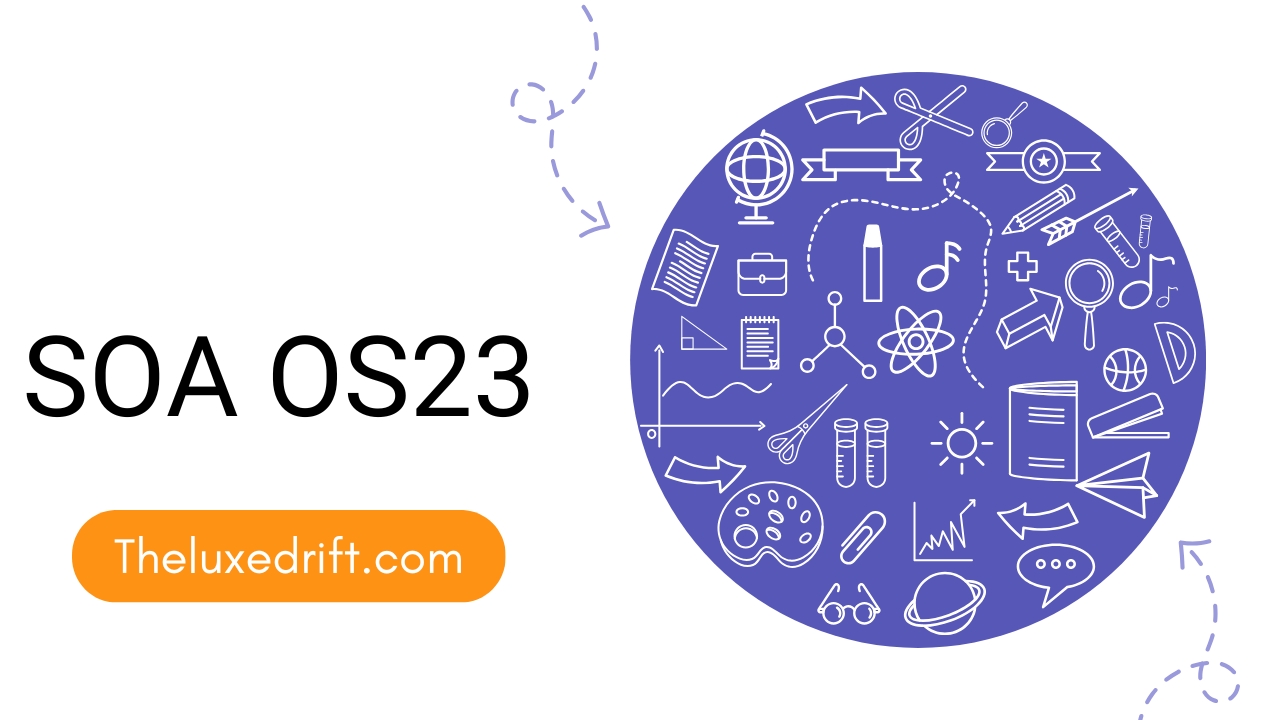In today’s fast-paced technological landscape, businesses are constantly seeking ways to improve their software systems to drive efficiency, scalability, and flexibility. One of the key approaches to achieving these goals is Service-Oriented Architecture (SOA OS23), a design pattern that allows organizations to break down complex applications into smaller, manageable services.
SOA OS23 refers to a specific implementation or version of Service-Oriented Architecture that is revolutionizing how software applications interact within large, enterprise-level systems. In this article, we’ll explore the evolution of SOA to OS23, its significance in modern software development, and how organizations can harness its potential to streamline operations.
What is Service-Oriented Architecture (SOA)?
Service-Oriented Architecture (SOA) is an architectural pattern that structures software applications as a collection of loosely coupled services. Each service performs a specific business function and communicates with other services through well-defined interfaces, typically using web protocols like HTTP, SOAP, or REST.
Key Characteristics of SOA:
-
Modularity: Services are designed to be independent, meaning changes in one service don’t affect others.
-
Reusability: Services can be reused across different applications or systems.
-
Interoperability: SOA enables communication between different systems, regardless of underlying platforms or technologies.
-
Scalability: It allows for scaling individual services based on demand, making it ideal for growing enterprises.
The Evolution to SOA OS23: What’s New?
The concept of SOA has been around for years, but as technology advances, so does the need for more robust, efficient, and flexible frameworks. SOA OS23 represents a modern iteration of SOA, incorporating new features and specifications to address contemporary challenges in software development.
Why OS23?
SOA OS23 brings several improvements that align with the increasing demand for:
-
Microservices: SOA OS23 embraces microservices architecture, where applications are broken down into smaller, independently deployable services. This allows for greater flexibility, faster deployment cycles, and improved fault tolerance.
-
Cloud Integration: SOA OS23 is designed to seamlessly integrate with cloud computing environments, supporting hybrid and multi-cloud infrastructures.
-
Advanced Security: With cybersecurity threats on the rise, OS23 incorporates enhanced security features such as encrypted service communication and strict authentication mechanisms.
-
API Management: OS23 improves the management of APIs, ensuring that services communicate securely and efficiently across systems and devices.
Benefits of Adopting SOA OS23 for Modern Enterprises
As businesses increasingly adopt digital transformation strategies, the importance of adopting SOA OS23 cannot be overstated. Here are some of the key advantages of integrating SOA OS23 into your organization’s infrastructure:
1. Scalability and Flexibility
SOA OS23 allows enterprises to scale their systems effectively. By decoupling services, companies can scale specific services that experience higher demand without needing to scale the entire system. This is especially beneficial in environments where data traffic or workload fluctuates.
2. Faster Time to Market
With the modular nature of SOA OS23, new features or updates can be developed and deployed as independent services. This approach allows for faster iterations, quicker updates, and a more agile development process, reducing time to market for new products or services.
3. Improved Fault Tolerance
Because services in SOA OS23 are loosely coupled, an issue in one service doesn’t necessarily affect the others. This isolation enhances the system’s fault tolerance, ensuring business continuity even when certain components encounter problems.
4. Enhanced Security
Security is a top priority for businesses, and SOA OS23 addresses this with strong encryption, secure data exchange protocols, and improved API management. These features ensure that sensitive business data is protected at all times.
5. Cost Efficiency
SOA OS23’s modular approach helps businesses avoid redundant services and resources, leading to more efficient use of infrastructure. By allowing independent scaling and maintenance, organizations can reduce their overall operational costs.
Implementing SOA OS23: Steps to Get Started
Adopting SOA OS23 can be a transformative experience for businesses, but it requires careful planning and execution. Here are some key steps for implementing SOA OS23 successfully:
1. Define Your Business Requirements
Before you dive into technical details, start by defining the business problems you need to solve with SOA OS23. Whether it’s improving the speed of transactions, enhancing customer experiences, or integrating legacy systems, clear goals will help guide the architecture.
2. Develop a Service Inventory
An effective SOA OS23 implementation starts with creating a comprehensive inventory of the services your business needs. Work closely with stakeholders to understand business processes and map out the services required to fulfill them.
3. Choose the Right Tools and Technologies
To fully leverage SOA OS23, you’ll need to select the right tools for service management, orchestration, and integration. Look for platforms and frameworks that support modern cloud environments, microservices, and API management.
4. Implement Microservices Architecture
SOA OS23 heavily leverages microservices, so your implementation should involve breaking down monolithic applications into smaller, self-contained services. This transition can be gradual, ensuring that critical functions remain intact while you migrate to the new structure.
5. Focus on API Design and Integration
With the growing reliance on APIs, a major aspect of SOA OS23 is the effective design, management, and integration of APIs. Ensure that your API gateway and management tools are in place to handle security, versioning, and scalability.
6. Continuous Monitoring and Optimization
Once SOA OS23 is in place, continuous monitoring is crucial for identifying performance bottlenecks or issues. Leverage monitoring tools to track the health of services, ensuring everything runs smoothly and efficiently.
Challenges to Be Aware Of When Adopting SOA OS23
While SOA OS23 offers many benefits, it’s not without its challenges. Some of the common hurdles include:
-
Complexity: Implementing SOA can be complex, especially for large organizations with legacy systems that need to be integrated.
-
Management Overhead: Managing a large number of services, APIs, and integrations can require significant resources and oversight.
-
Skill Requirements: SOA OS23 implementation often requires specialized skills, such as knowledge of microservices, cloud infrastructure, and API management.
However, with the right planning, resources, and expertise, these challenges can be mitigated, allowing your organization to reap the rewards of SOA OS23.
Conclusion
As businesses continue to evolve, adopting modern architectural frameworks like SOA OS23 is no longer optional. SOA OS23 offers enhanced scalability, flexibility, and security, helping organizations streamline their operations, improve system performance, and stay competitive in the digital age.
By embracing SOA OS23, businesses can not only enhance their technological infrastructure but also drive innovation, accelerate time to market, and improve the customer experience.

